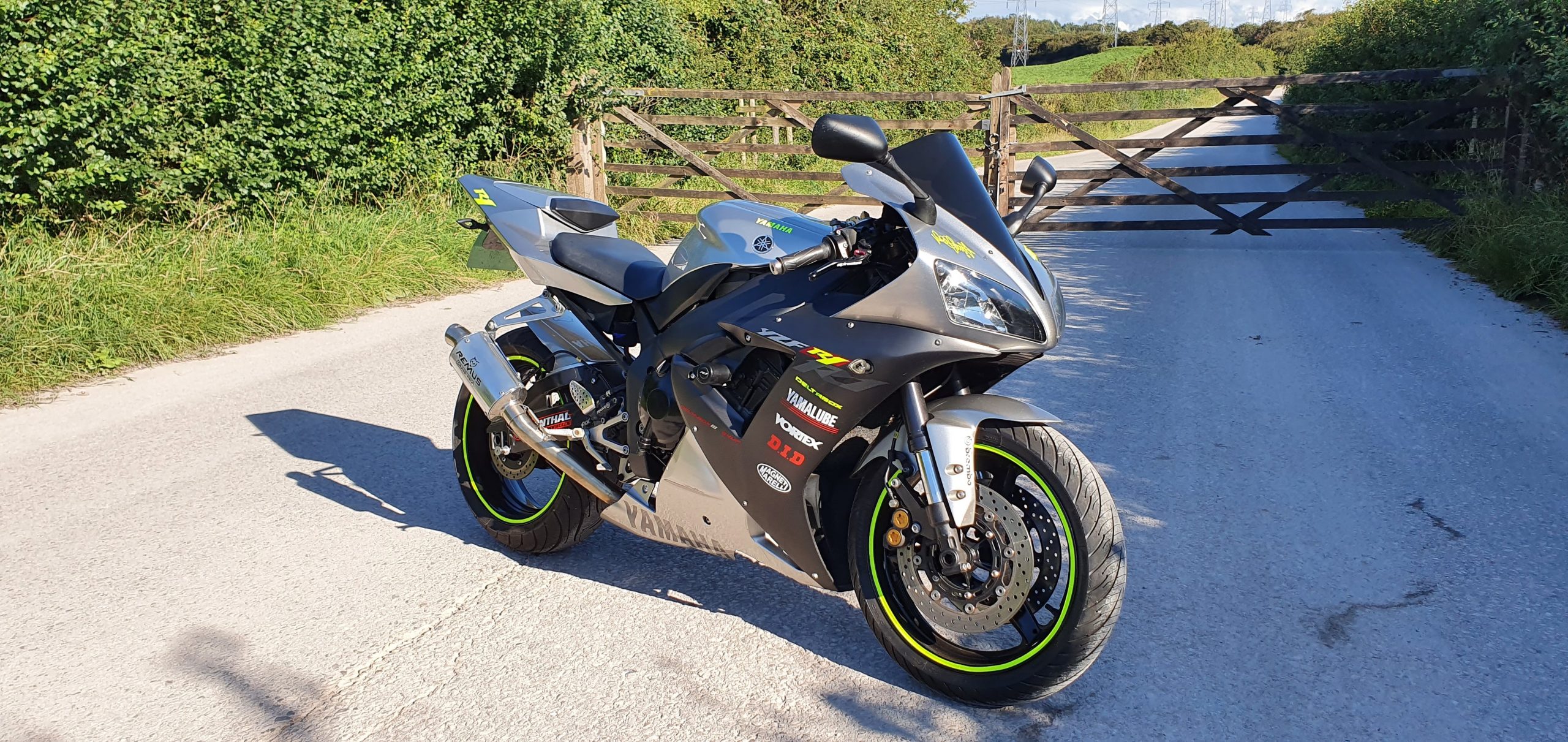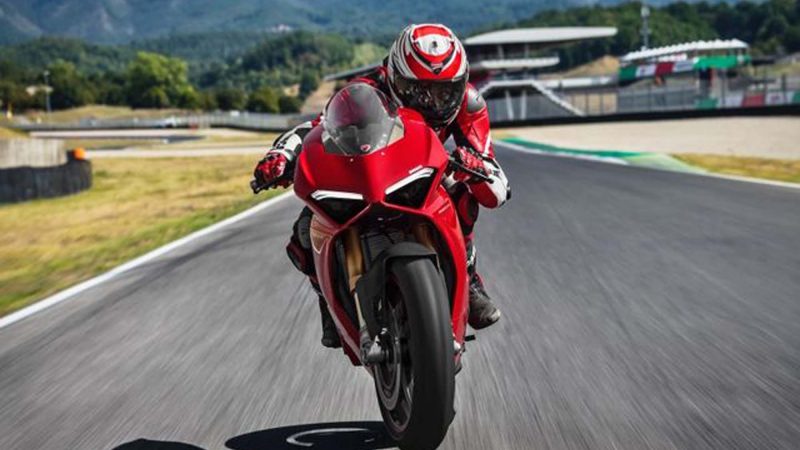Used Bike Review: Yamaha R1 (2002 – 2003)

Yamaha R1 review (2002 – 2003)
Ultimate budget superbike performance
Here we have a 2002 Yamaha YZF R1. The R1 is one of the most well known models of superbike. You’ll find people who don’t know much about bikes even knowing its name, and that’s for good reason. The R1 has enjoyed continued success since it was first set loose back in 1998. As with most of the famous models, the R1 has continued to develop up until the current era, the 2002 – 2003 bike I rode for this review was a third generation R1.
The R1’s (or 5PW as this variant is known) Deltabox 3 frame has fewer welds then the model before it, which gives around 30% more rigidity. This bike was also the first mass produced bike to feature free piston fuel injection, though it still relied on conventional CV style carbs. This was a very clever move from Yamaha and came about after suffering fuel injection snatch on their MotoGP bike of the time. If you’re interested, you can read more about this clever set up here. The engine mostly remains the same as previous generations, but it has been on a weight loss diet and has gone through a major tune up, giving you a claimed 152 BHP to play with. To slow you down, you have a single piston caliper with dual 298mm discs up front. We’ve also got fully adjustable suspension, front and rear.
Setting off:
Getting onto the bike for the first time feels like any other Japanese sports bike of the time. Everything is well laid out and where you would expect it to be.
The bike negotiates towns and smaller roads with ease, the seating position is comfortable without leaving to much pressure on your wrists. There no low rpm lurching and the bike is quite happy pottering along at barely nothing rpm. I couldn’t pick any fault as I made my way towards the bigger A roads.

Getting Going:
I actually rode this bike the same day that I did the Ducati 1199 review, so I was really keen to get going on the A roads to see how this older model R1 compared. Obviously, the big Ducati has 50+ extra BHP, more electronic aids then you know what to do with and benefits from almost over 10 years development than the R1. I was keen to see how much of a difference all that stuff actually makes.
The 5PW makes riding the A roads quickly an easy pleasure. Although power is plentiful, it’s not nearly as aggressive as modern day superbikes…and that’s actually quite nice. Torque is delivered evenly and is balanced well across the rev range, but get to 10,000 rpm and it seems to wake up and pulls harder for those last few thousand RPM.
Heading into a corner, even when carrying a lot of speed, The R1 holds its position on the road really well. Tipping in and out is effortless and the bike gives you the confidence to push as hard as you want to.
One criticism I noticed fairly early on, the seat is insanely slippery. Even just touching the brakes softly I found myself bracing on the foot pegs to prevent the Crown Jewells making painful contact with the tank! I’m not sure if that is something in the design of the 5PW, or if the seat had been polished with something during cleaning. An easy fix either way.
Other than trying to castrate me on any change of speed, I found the R1 really comfortable. There is loads of leg room and the seating position is that perfect balance between sports and cruising that the Japanese are oh so good at.
An hour or so in and I find I’ve got really comfortable with the bike, anticpating how the bike will react to your input becomes easier and it has a really short learning curve. There is something very satisfying about riding a bike like this well, it takes you back to a simpler time where we weren’t controlled by rider aids. With that being said, you would be forgiven for forgetting that the bike your riding is almost 20 years old!
Closing Thoughts:
I had loads of fun on reviewing this bike, it does everything you ask of it and more. Of course, it’s a totally different beast to todays 200bhp bikes, but all of the power it has is very useable, even on the road. If your in the market for one, be sure to give it a good once over. This model is prone to a problem between 1st and 2nd gear, should you be unlucky it isn’t an inanely costly repair but its something to be aware of. When riding the bike, you really wouldn’t know that it’s almost 20 years old now, the throttle is sharp with a lovely linear power delivery,, the handling is light and the brakes are strong. You can pick up a 5PW now for around 3 grand…that provides incredible value for money. I would strongly suggest looking at this bike for either an introduction to superbikes, if your getting back into bikes after some time out or if you’re looking for something to take to the track.
Ratings:
Your typical, Japanese inline four. Easy to live with, easy to work on and will do everything that you ask of it. This particular bike still uses the original R1 engine, though benefits from the tuning and development before it was replaced by the new engine for the 2004 R1.
Fully adjustable forks and rear shock. Super smooth to ride and more than capable of what your average rider is going to ask for.
The dual 280mm discs up front work as well as you would expect, though there is some room for improvement. I suspect a simple set of uprated brake pads would make all the difference here.
As is usually the case with Japanese bikes, the R1 is really well finished and everything is built to last. The only thing I didn’t like was the kickstand. It feels a little flimsy but it does the job. An easy enough fix if it bothers you that much.
A budget superbike that doesn’t look out of place parked up with the modern era superbikes, even if it 20 years old. Plenty of performance and reliability. Incredible value for money.








